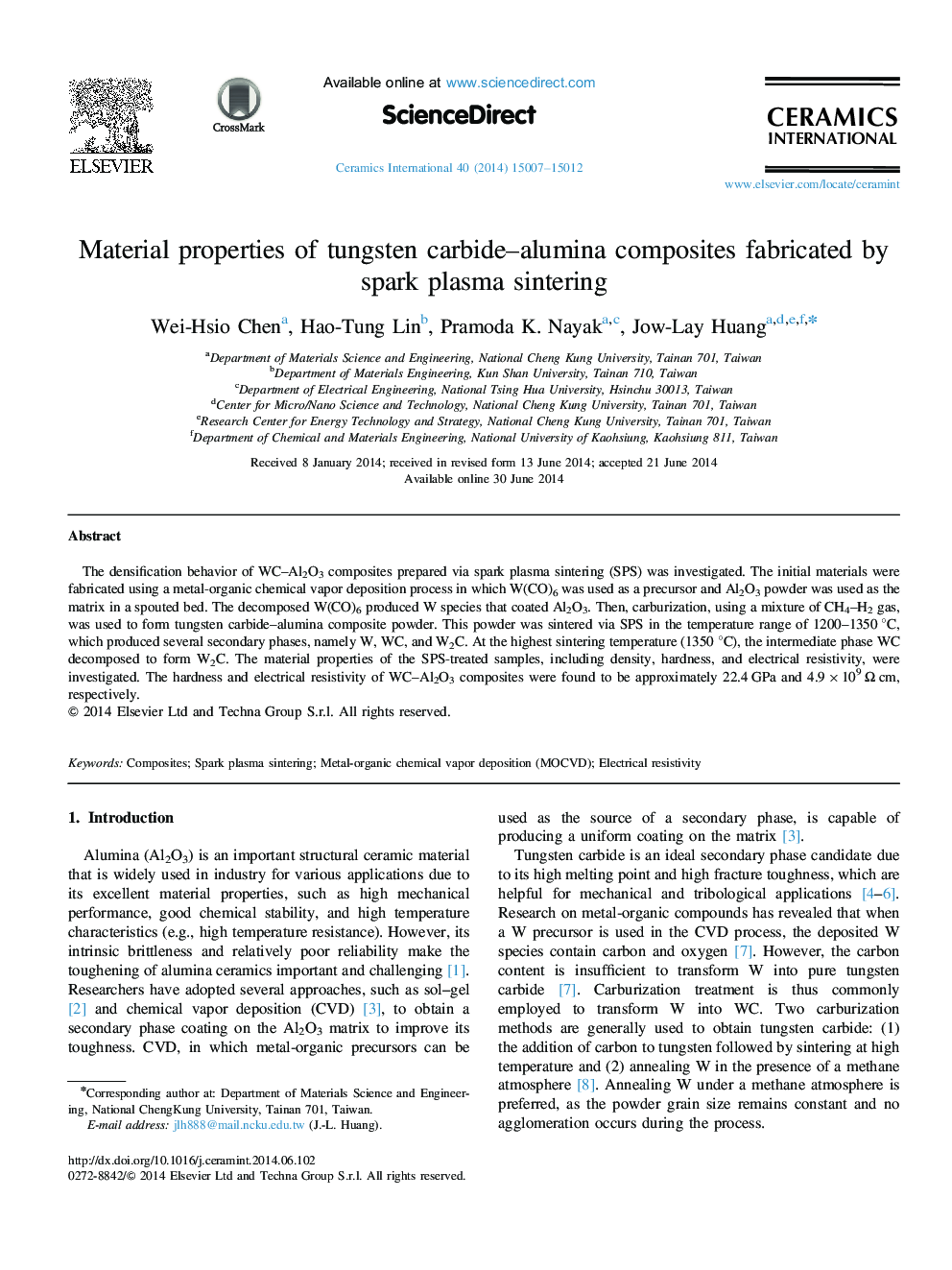| Article ID | Journal | Published Year | Pages | File Type |
|---|---|---|---|---|
| 1461247 | Ceramics International | 2014 | 6 Pages |
The densification behavior of WC–Al2O3 composites prepared via spark plasma sintering (SPS) was investigated. The initial materials were fabricated using a metal-organic chemical vapor deposition process in which W(CO)6 was used as a precursor and Al2O3 powder was used as the matrix in a spouted bed. The decomposed W(CO)6 produced W species that coated Al2O3. Then, carburization, using a mixture of CH4–H2 gas, was used to form tungsten carbide–alumina composite powder. This powder was sintered via SPS in the temperature range of 1200–1350 °C, which produced several secondary phases, namely W, WC, and W2C. At the highest sintering temperature (1350 °C), the intermediate phase WC decomposed to form W2C. The material properties of the SPS-treated samples, including density, hardness, and electrical resistivity, were investigated. The hardness and electrical resistivity of WC–Al2O3 composites were found to be approximately 22.4 GPa and 4.9×109 Ω cm, respectively.
